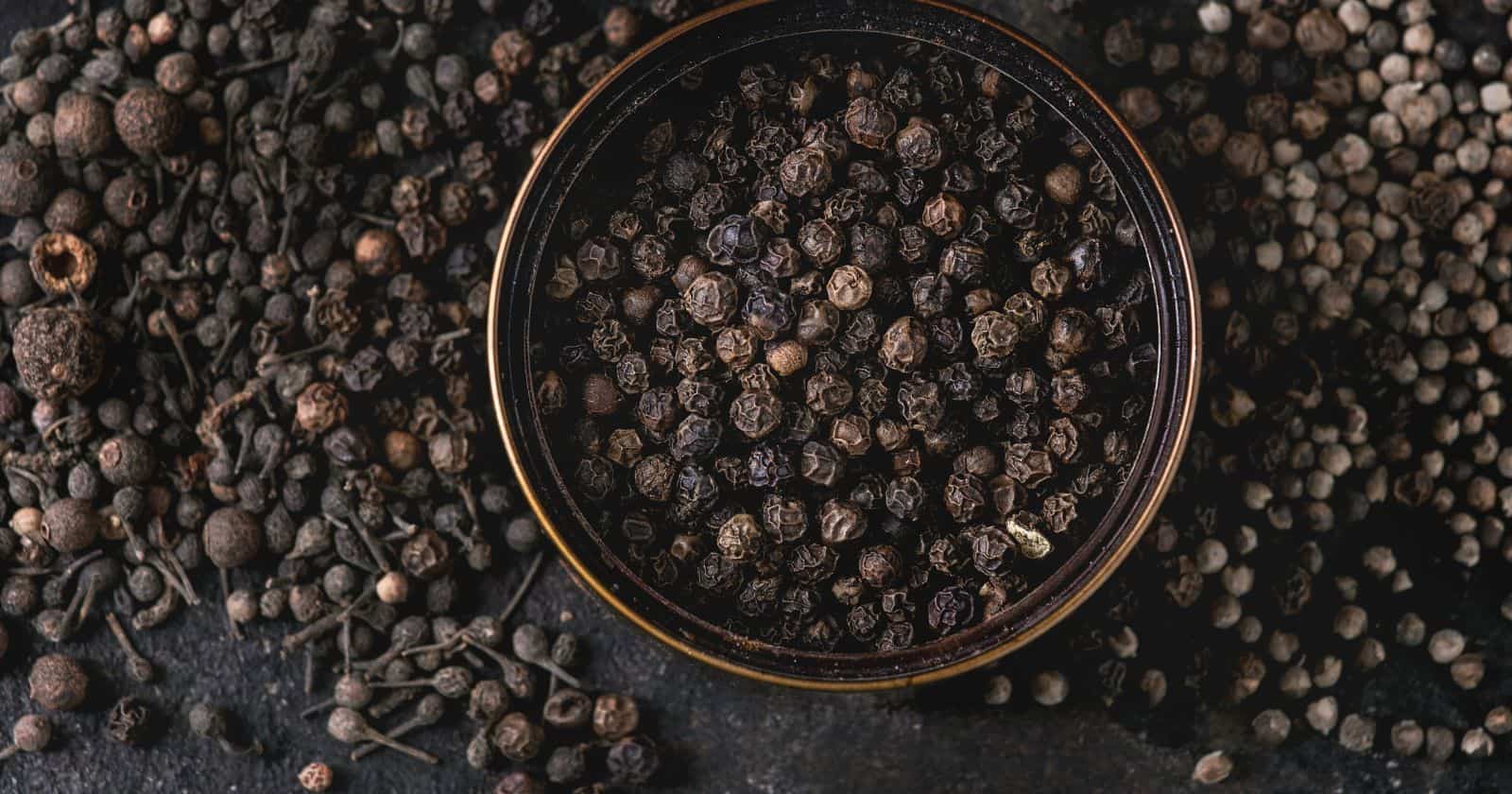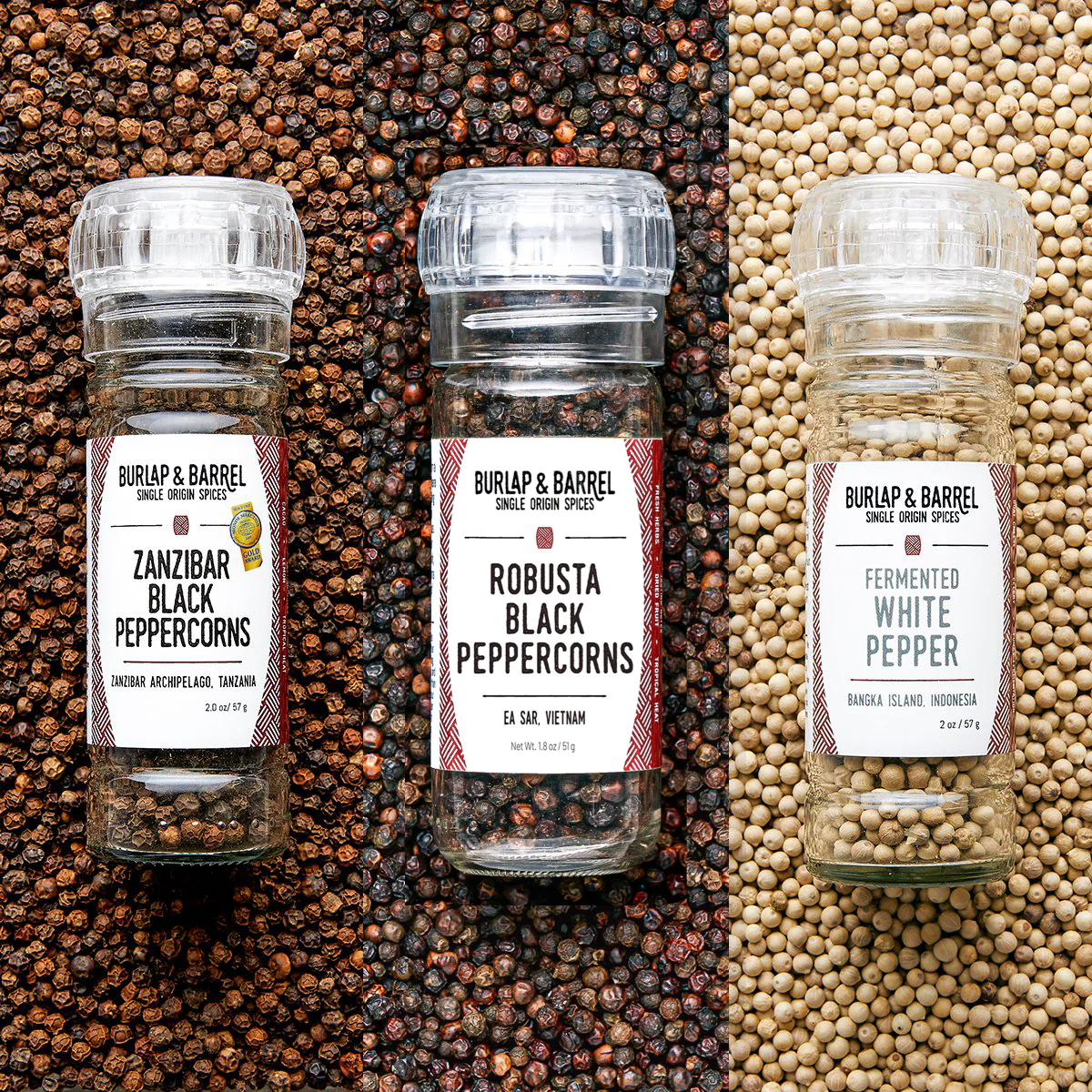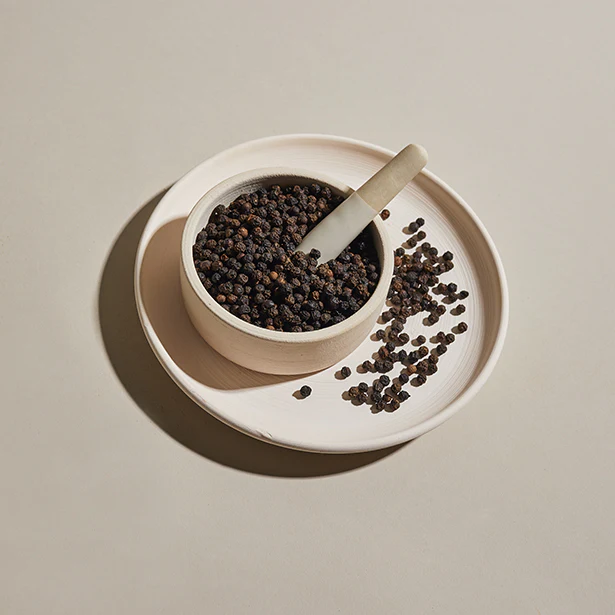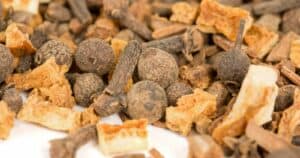Black pepper is usually at the top when it comes to popular spices. But how much do you know about this classic seasoning?
From peppercorns to powder, it’s more complex than you might think.
If you’re looking for more information on black pepper, this guide is perfect for deepening your knowledge to use and enjoy its flavor in your cooking confidently.
This guide will cover key points such as types of black pepper and their uses, how it’s harvested and processed, unique flavor profile and culinary services all around the world, best practices for storing and using black pepper in cooking, the incredible health benefits associated with it–it even has substitutes!
Everything that has propelled the popularity of this ingredient around the globe can be found on these pages.
Get ready to uncover everything there is to know about black pepper!
Types Of Black Pepper
Black pepper is a widely used
Tellicherry Black Peppercorn
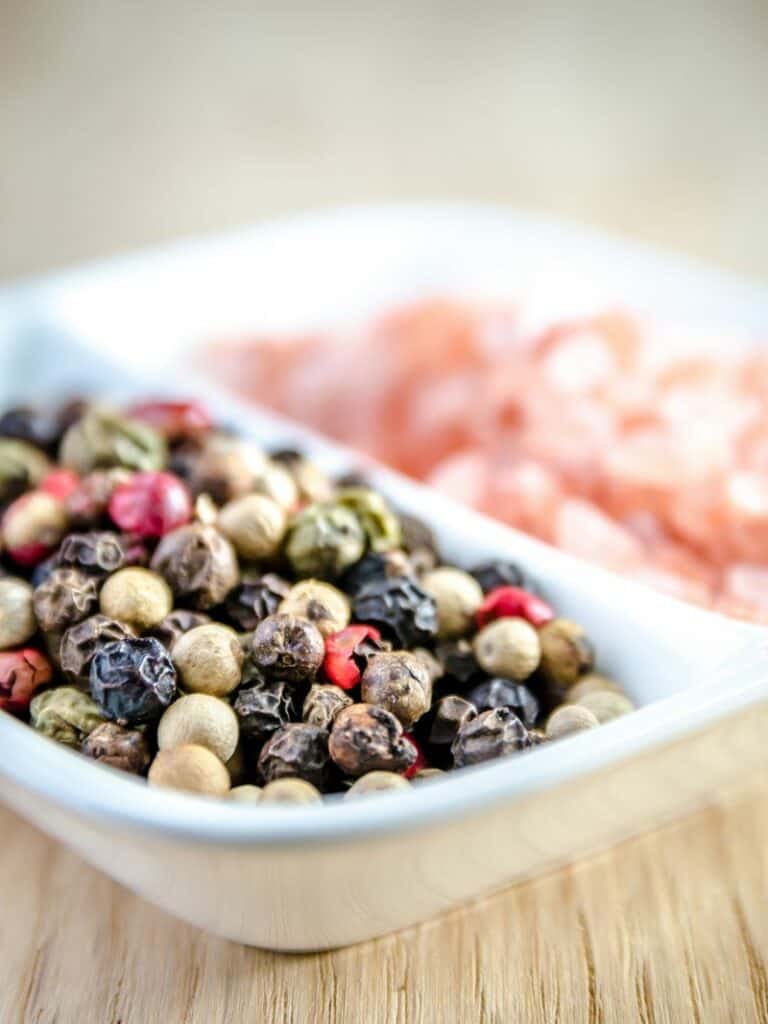
This type of black peppercorn refers to its size rather than its quality or place of origin. Tellicherry peppercorns are more significant than others and are often preferred by chefs for their bold flavor.
Black Pepper
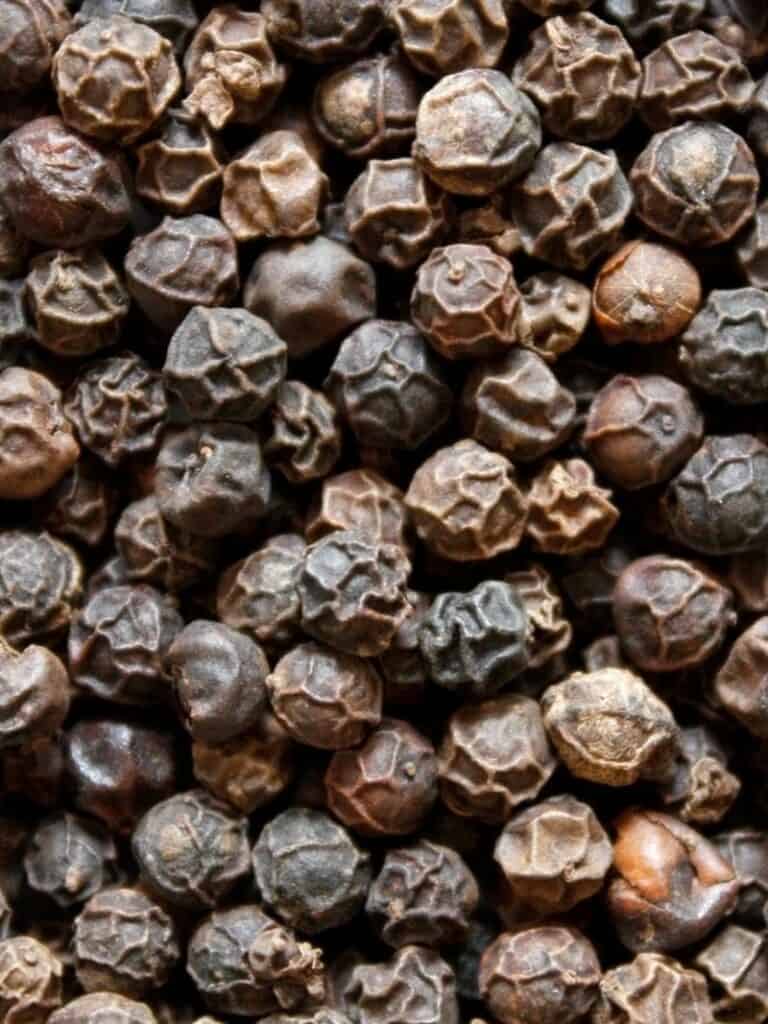
Black pepper is made by picking the almost ripe berries and drying them in hot ovens until they shrivel. This process gives it its distinctive dark color and intense flavor.
White Pepper
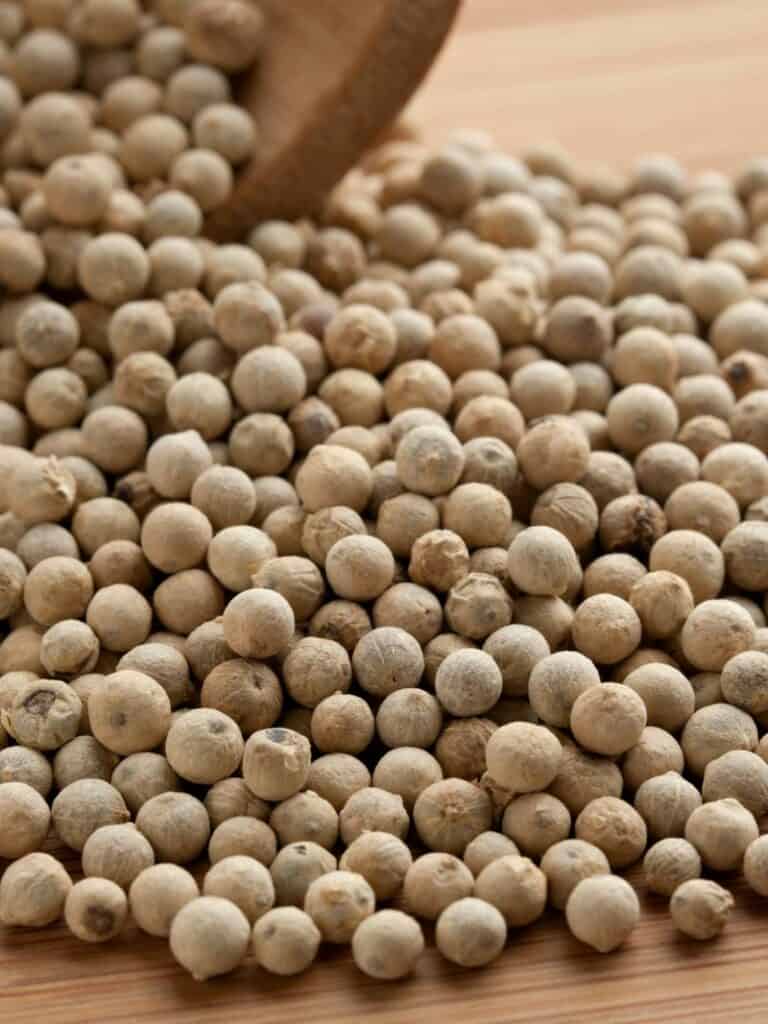
White pepper is made by soaking ripe berries in water for about ten days until their outer layers soften enough for removal. This process produces a milder flavor than black pepper and is often used in white or light-colored dishes.
Green Pepper
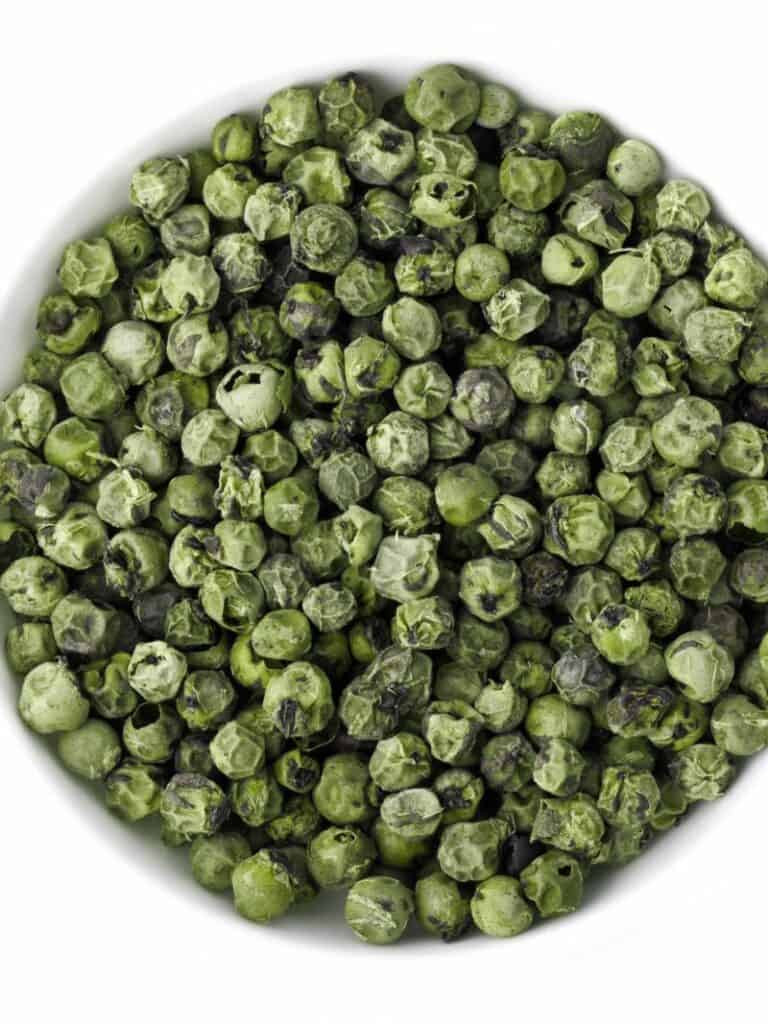
Green pepper is picked before fully ripening and frozen or freeze-dried immediately after harvest to retain its bright green hue. They have a sharp taste similar to black pepper but with more citrusy notes.
Sichuan peppercorns
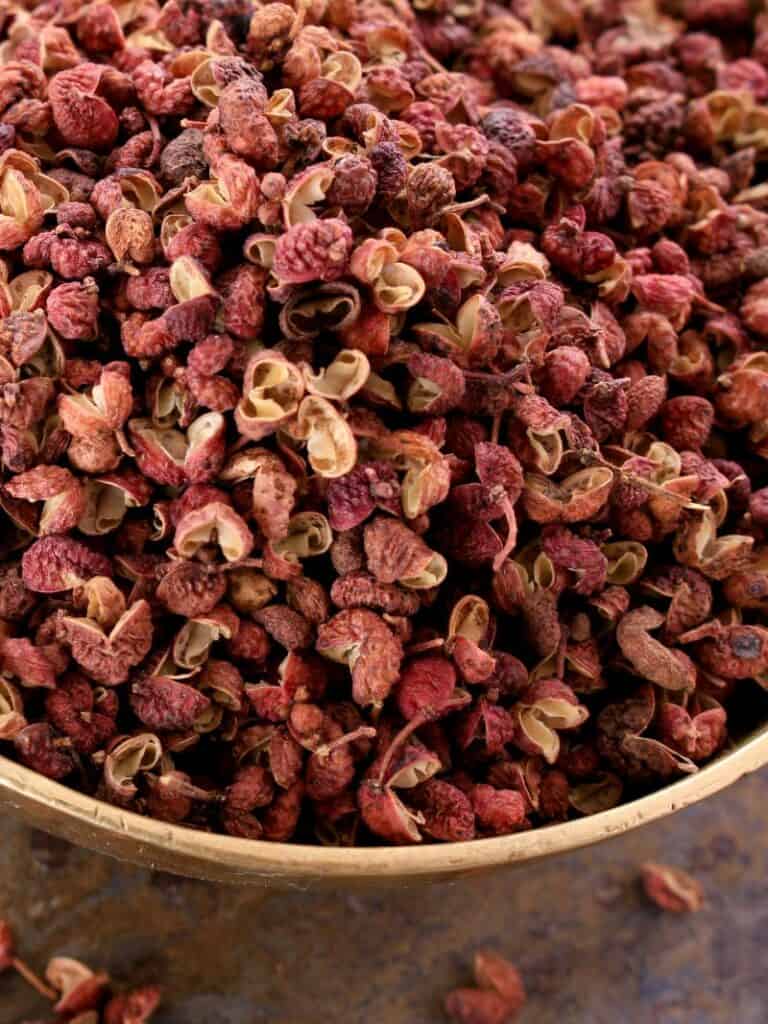
While pink and Sichuan peppercorns are sometimes packaged as “Szechuan,” they don’t fall under the category of true peppercorns.
Despite the color variation, black, white, and green pepper are all the same seeds of the same plant.
By understanding the different types of black pepper, you can choose the one that best suits your cooking needs.
Flavor Profile Of Black Pepper
Ground black pepper is a popular
Tellicherry black Peppercorns are more significant than other varieties and have a more intense aroma and flavor.
Black pepper is one of the most popular spices in the world, and it is used in both savory and sweet dishes.
It has an earthy, spicy, woody taste with bold notes that can add depth and heat to any savory dish.
The mild-but-highly aromatic Tellicherry black Peppercorns lack piperine — an alkaloid providing black pepper’s intense sensation of heat — offering instead a delicate combination of fruity flavors with warm citrus notes.
Increasingly popular among chefs and home cooks alike, ground black pepper can be used to season any food, from soups to salads to meats or desserts.
Its versatility makes it perfect for adding complexity to your favorite dishes without overpowering the other ingredients’ flavors.
Harvesting And Processing Black Pepper: How It’s Grown And Prepared For Market
Black pepper is one of the most popular spices in the world, and it is harvested and processed in a specific way.
The harvesting process begins with good harvesting and transporting processes, which prevent contamination until the raw material is processed.
After being harvested, the pepper berries are sent to a processing facility where they undergo primary processing.
This includes reception, cleaning and grading, threshing, and secondary processing such as grinding and packing.
White pepper is derived from fully ripe red pepper berries soaked in water for several days to remove their outer layer.
The black peppercorns are picked slightly earlier before they ripen completely.
They are then dried under direct sunlight or by mechanical dryers for several weeks until they become hard enough to be stored without spoiling.
The drying process helps preserve its flavor and aroma while preventing mold growth during storage.
Once dried, the peppercorns are inspected for quality before being packaged for sale on store shelves or online markets worldwide.
With careful harvesting and processing techniques, black pepper can remain flavorful for many months after it has been purchased!
Health Benefits Of Black Pepper
Research suggests that black pepper may help improve digestion, as it stimulates the production of hydrochloric acid in your stomach. This could help break down food and aid in nutrient absorption.
Additionally, its thermogenic properties may boost your metabolism and help with weight loss.
Black pepper can also provide respiratory relief, which could benefit those suffering from respiratory problems such as asthma or bronchitis.
Moreover, its antibacterial quality helps kill bacteria and prevent infections, while its appetite-suppressing properties could help reduce cravings and hunger pangs.
Rich in antioxidants, black pepper aids in fighting inflammation and boosting brain health by protecting against oxidative stress.
It is also packed with essential nutrients like calcium, magnesium, vitamin K1, iron, manganese, and folate, essential for overall well-being.
Savory Dishes That Feature Black Pepper
Black pepper is one of the most versatile spices in the kitchen. It can be used to add flavor and aroma to various dishes.
From salads to omelets, black pepper is a great way to add a little extra flavor. Adding salt, olive oil, and cider vinegar to salad dressings can give them an extra kick.
Adding black pepper also benefits from omelets, egg mayonnaise, and other cheese and egg dishes.
The uses for black pepper don’t end there; it can also be added to cheese bread and other baked goods for an extra layer of flavor.
Black pepper isn’t just part of Indian spices either; it has been used in cuisines worldwide for centuries! For example, India uses black peppercorns in many dishes, including curries and masalas.
Here are some dishes that feature black pepper as a key ingredient:
Steak au Poivre
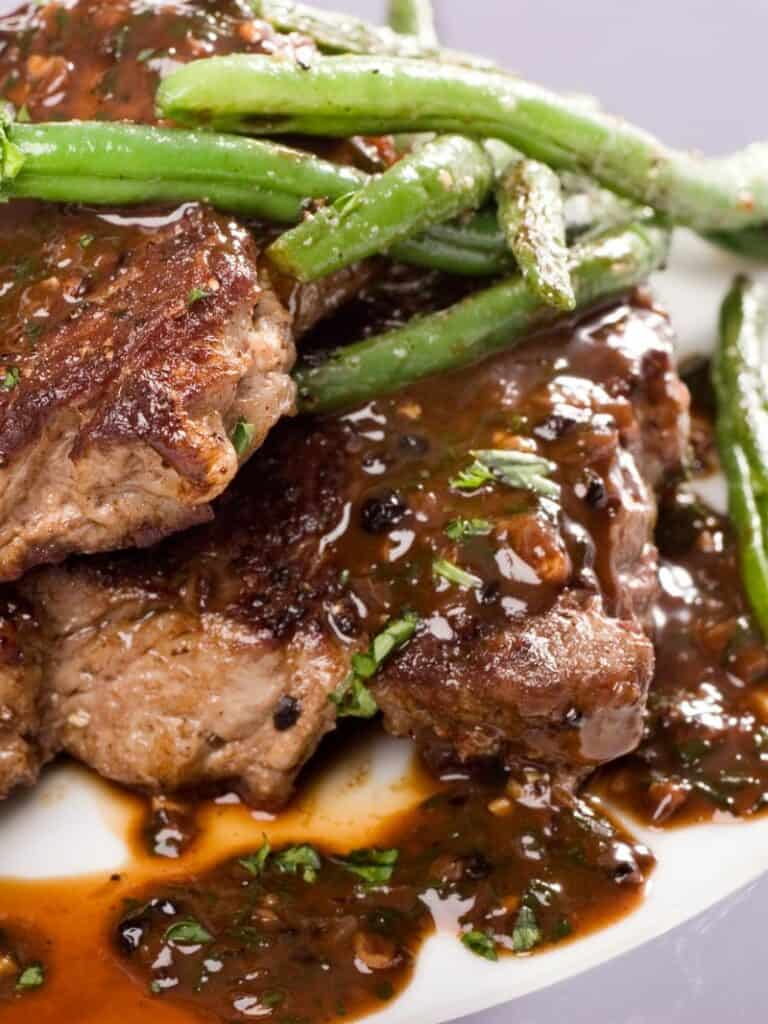
This French dish is made by coating a steak in crushed black peppercorns and searing it until it’s cooked to your liking. The black pepper adds a bold, spicy flavor to the steak.
Black Pepper Crab

This Singaporean dish features whole crabs stir-fried with a generous amount of black pepper. The heat of the black pepper is balanced with a touch of sweetness, resulting in a delicious and aromatic dish.
Spaghetti Carbonara
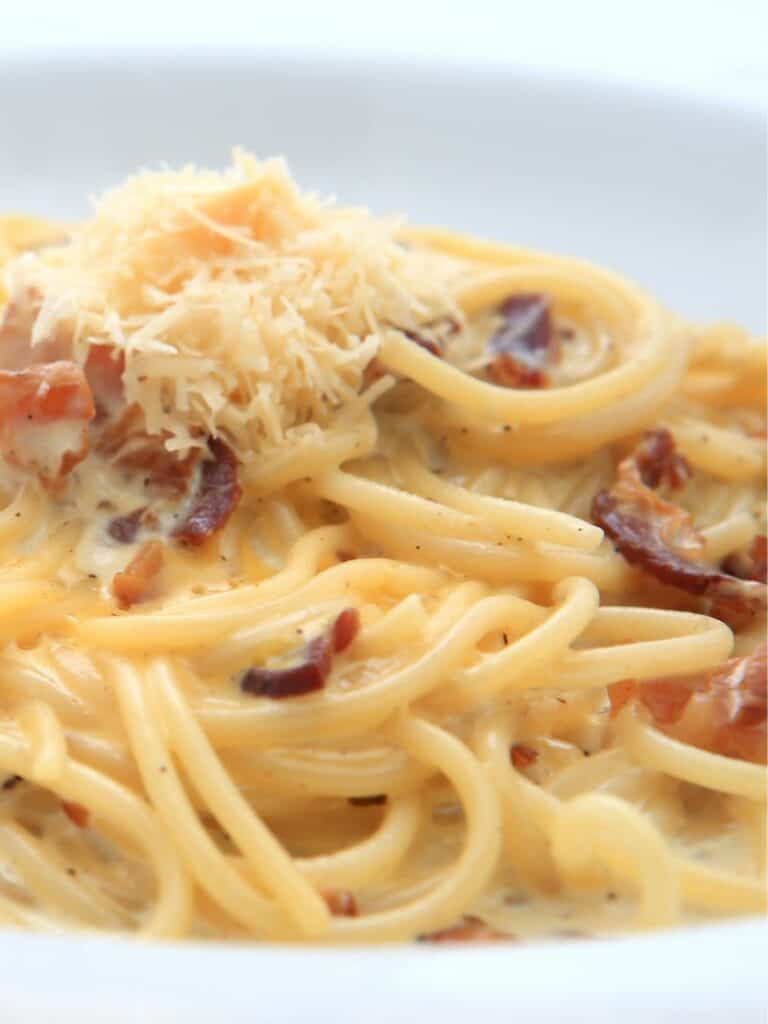
This Italian classic is made with eggs, cheese, and black pepper sauce. The black pepper adds a spicy kick to the creamy sauce, making for a simple yet flavorful dish.
Grilled Chicken with Black Pepper
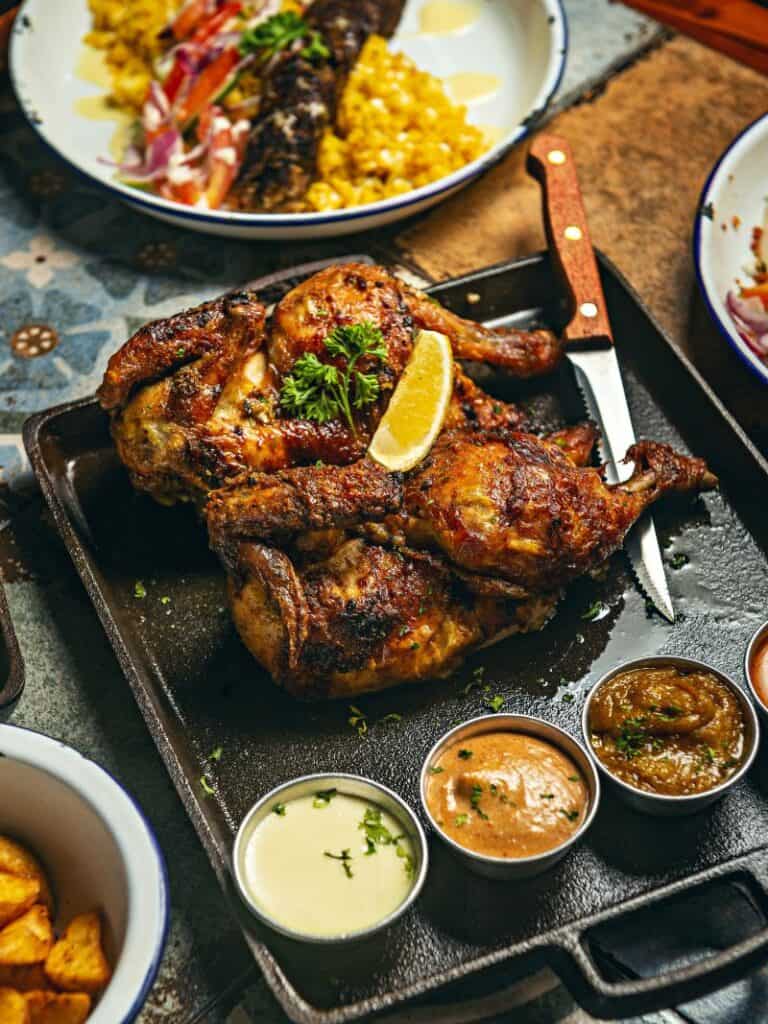
This recipe is made by marinating chicken in a mixture of black pepper, olive oil, garlic, and lemon juice before grilling it to perfection. The black pepper gives the chicken a smoky, spicy flavor that pairs well with the tangy lemon and garlic.
Mashed Potatoes

Black pepper is a classic ingredient in mashed potatoes. The
Storing And Using Black Pepper: Best Practices And Creative Ideas
Black pepper is a staple in many kitchens and can be used to add flavor to dishes. To get the most out of your pepper, it’s essential to store it correctly.
The best way to store black pepper is in a tightly sealed glass container, such as a mason jar, in a dark, dry, and cool place.
Whole peppercorns will last almost indefinitely when stored this way; however, ground pepper should be reserved for no more than three months.
To use the pepper for more extended periods without spoiling, you can dry it. This also lets you keep peppers without spoiling them for a long time.
To dry peppers at home, roll the heel of your hand against the top of the tube until the skin separates from the flesh and seeds inside.
Then remove all the seeds from the inside and place them on an oven-safe tray lined with parchment paper or aluminum foil.
Bake at 200°F for about 30 minutes or until completely dried out, then store them in an airtight container or jar in a dark place for up to 12 months.
Dried peppers will stay crunchy for several months but gradually soften over time due to moisture absorption from humidity levels in your kitchen environment.
Black Pepper Substitutes
If you’re out of white pepper and need a substitute, don’t worry – plenty of options are available! Here are some substitutes for white pepper that you can use in your cooking:
Ground Ginger
Ground ginger is an excellent substitute for white pepper, particularly for dishes with a hint of sweetness and
Ground Black Pepper
If you don’t have white pepper or other spices on hand, you can use ground black pepper as a substitute.
Just use a little less than what’s called for in the recipe to avoid making the dish too spicy or bitter.
Cayenne and Paprika Mixture
For a milder
Cumin
If you’re looking for a substitute with a warm, earthy flavor, try using a small amount of ground cumin instead of white pepper. Just use an eighth teaspoon to avoid overpowering the dish with too much heat or flavor.
These substitutes are great options when you don’t have white pepper.
Remember that white pepper has a different flavor profile than black pepper, so if you’re substituting in a recipe, it’s best to use a small amount and adjust to taste.
Where to Buy Black Pepper?
Black pepper is a widespread
Health food stores and specialty
Online retailers like Amazon and Walmart offer a convenient option for purchasing black pepper and delivering it straight to your door.
This black gold has been treasured since the time of the Ancient Egyptians.
Today, Tellicherry Peppercorns are in almost every kitchen worldwide.
These extra-large berries are left to ripen longer on the vine, maximizing their rich fruitiness and Tellicherry peppercorn flavor.

